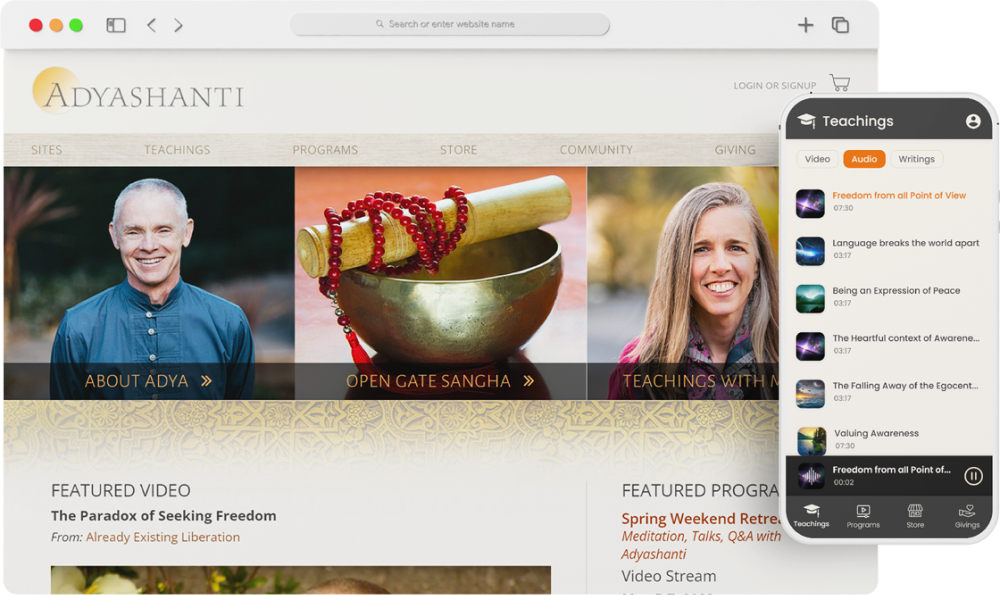SMART TRACKING
Web Development Solutions for Charity Organizations
Our content management system will help you to create a global online presence for your non-profit and charity organization. Our Web Solution for Charity and Non-Profit Organizations Developers are highly skilled at developing CMS and Website Solutions for spiritual leaders and catholic charities.

Top CMS Features for Non-Profit and Charity Solutions Company
Top CMS solutions for charities and non-profits offer a variety of features designed to meet the specific needs of these organizations. Consider these key features:
Donation and Fundraising Management
The CMS must have built-in modules or plugins compatible with managing online fundraising and donations.
Event management
The CMS should include features that help organize and promote events. These may include creating event pages, registering forms, and integrating popular event management platforms.
Volunteer Management
Volunteers are essential to many non-profit organizations. The CMS should be able to manage volunteer registrations and communication and track volunteer hours.
Content Management and Publishing
Content management systems should be easy to use and provide tools for editing, creating, and organizing content on a website.
Responsive design and mobile optimization
The CMS should provide responsive templates or allow you to create mobile-friendly designs.
Social Media Integration
Integrating social media platforms with non-profits allows them to engage their supporters and promote their work.
Top CMS Benefits for Non-Profit and Charity Solutions
Easy to use
Customizability
Cost-Effective
Large and Active User Communities
Integration Capabilities
Scalability
Unlock the potential of your visionary project with our expert team. Contact us today and let's work together to bring your dream to life.
Embark on Your Visionary Project
Industry we served
Yorem ipsum dolor sit amet, consectetur adipiscing elit. Nunc vulputate libero et velit interdum, ac aliquet odio mattis.

Retail and Shopping

Healthcare

Financial Technology
Platforms & Integrations
Our vehicle tracking solutions offer seamless integration for enhanced functionality.

Technology Platforms
Compatible with the latest web & mobile platforms
Third-party integration
Seamless integration to deliver better value to customers
Our Blogs: Feel the Beat of Innovation
Stay in sync with the latest in technology and business transformation.


Claude AI Deployment Strategies: A Guide to Effective Integration and Optimization
This blog explores effective deployment strategies for Claude AI, Anthropic’s advanced, ethically aligned AI model. It outlines a phased approach—Preparation, Integration, and Optimization—for successful implementation. Real-world applications highlight Claude’s impact on DevOps, business operations, and developer productivity.
June 10,2025


Voice AI in 2025: Quietly Rewiring the Enterprise
Voice AI used to grab attention with flashy demos, talking avatars, and big promises. But in 2025, the focus has shifted to real, practical use. It’s no longer about showing off or testing ideas — it’s about getting real work done. Today, Voice AI helps in important areas like hospital support and customer service in different languages.
June 05,2025


Understanding 8 Specialised AI Models Powering the Future of Intelligent Systems
This blog explores eight cutting-edge specialised AI models—LLM, LCM, LAM, MoE, VLM, SLM, MLM, and SAM—each designed for specific data types, tasks, and enterprise needs. These models enhance operational efficiency, accuracy, and scalability across industries by leveraging tailored architectures. From natural language processing to image segmentation, understanding these AI systems is vital for future-ready businesses.
May 29,2025
Frequently Asked Questions
-
How do choose the best CMS Company to develop my solution?
Suppose you are looking for the best CMS solutions. In that case, your company should: Have at least 5-10 years of experience, have completed over 500 projects, and have a Team of experienced and professional developers.
-
How long does it usually take to create a CMS site?
The time will depend on the project, the number of developers and testers assigned features, platform and UI/UX. As a leading CMS company, we deliver projects using agile development and coding methodologies.
-
What after-sales services will you offer once my CMS development project has been completed?
Even after final delivery and sign-off, we are there for you. After signing off, we offer a six-month warranty and free updates for your website or application.







